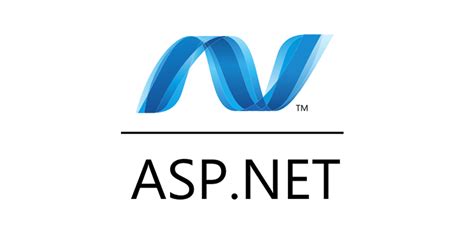Linkliar
Author: c | 2025-04-24

{ token : linkliar, full_token : linkliar, old_tokens :[], tap : homebrew/cask, name :[ LinkLiar ], desc : Link-Layer MAC spoofing GUI for macOS, homepage : https

LinkLiar/LinkLiar/oui.json at master halo/LinkLiar - GitHub
Prevent your Mac from leaking MACsThis is an intuitive macOS status menu application written in Swift to help you spoof the MAC addresses of your Wi-Fi and Ethernet interfaces.How do I install this?It is free as in open-source. Should you like to motivate me, you may click on the ✭ in the top-right corner.RequirementsmacOS Sierra (10.12) or later (see releases for older versions).Administrator privileges (you will be asked for your root password once).InstallationIf you have Homebrew, just run brew install --cask linkliar.To install it manually, follow these instructions in the documentation.DocumentationWhat you're looking at right now is the technical documentation.The end-user documentation is located at halo.github.io/LinkLiar.There is also a source-code documentation in progress, see bin/docs for inspiration.Limitations/CaveatsWhen your Wi-Fi (aka Airport) is turned off, you cannot change its MAC address. You need to turn it on first.If you change a MAC address while the interface is connected, you will briefly loose connection.If you rapidly close and open your MacBook, the MAC address may change while the Wi-Fi connection remains and you loose the connection.Whenever you successfully changed your MAC address, your System Preferences will still show you the original hardware MAC address.This is normal behavior and your actual network traffic uses the new, changed MAC address.2018 Macbooks (and later) cannot change their MAC address, for unknown reasons.TroubleshootingYou can create this logfile and whenever it exists, all LinkLiar components will write to it:touch "/Library/Application Support/LinkLiar/linkliar.log"Delete the log file again to silence logging.Once LinkLiar is started and the menu is visible, you { token : linkliar, full_token : linkliar, old_tokens :[], tap : homebrew/cask, name :[ LinkLiar ], desc : Link-Layer MAC spoofing GUI for macOS, homepage : https { token : linkliar, full_token : linkliar, old_tokens :[], tap : homebrew/cask, name :[ LinkLiar ], desc : Link-Layer MAC spoofing GUI for macOS, homepage : https It would be a useful privacy feature (maybe as an option in the menu bar) to randomize the MAC address between network changes, e.g. for in the times when I switch between "Café Wifi" and "My Home Wifi". I think something like this, if implemented, would work best if changed between switching networks, when there is no other connection available so it doesn't mess with the current network (as macOS's wifi seems to struggle enough to reconnect when manually changed while connected).I've noticed that I don't turn my Mac off very often, as most of the time it just sleeps, and the only time that LinkLiar automatically changes the address is upon boot. Too many times I've gone for weeks and weeks on end before realizing that my device and where I've been has been completely trackable among the many networks I switch between because I forget to change my MAC address beforehand. Could something like this be implemented?Comments
Prevent your Mac from leaking MACsThis is an intuitive macOS status menu application written in Swift to help you spoof the MAC addresses of your Wi-Fi and Ethernet interfaces.How do I install this?It is free as in open-source. Should you like to motivate me, you may click on the ✭ in the top-right corner.RequirementsmacOS Sierra (10.12) or later (see releases for older versions).Administrator privileges (you will be asked for your root password once).InstallationIf you have Homebrew, just run brew install --cask linkliar.To install it manually, follow these instructions in the documentation.DocumentationWhat you're looking at right now is the technical documentation.The end-user documentation is located at halo.github.io/LinkLiar.There is also a source-code documentation in progress, see bin/docs for inspiration.Limitations/CaveatsWhen your Wi-Fi (aka Airport) is turned off, you cannot change its MAC address. You need to turn it on first.If you change a MAC address while the interface is connected, you will briefly loose connection.If you rapidly close and open your MacBook, the MAC address may change while the Wi-Fi connection remains and you loose the connection.Whenever you successfully changed your MAC address, your System Preferences will still show you the original hardware MAC address.This is normal behavior and your actual network traffic uses the new, changed MAC address.2018 Macbooks (and later) cannot change their MAC address, for unknown reasons.TroubleshootingYou can create this logfile and whenever it exists, all LinkLiar components will write to it:touch "/Library/Application Support/LinkLiar/linkliar.log"Delete the log file again to silence logging.Once LinkLiar is started and the menu is visible, you
2025-04-07It would be a useful privacy feature (maybe as an option in the menu bar) to randomize the MAC address between network changes, e.g. for in the times when I switch between "Café Wifi" and "My Home Wifi". I think something like this, if implemented, would work best if changed between switching networks, when there is no other connection available so it doesn't mess with the current network (as macOS's wifi seems to struggle enough to reconnect when manually changed while connected).I've noticed that I don't turn my Mac off very often, as most of the time it just sleeps, and the only time that LinkLiar automatically changes the address is upon boot. Too many times I've gone for weeks and weeks on end before realizing that my device and where I've been has been completely trackable among the many networks I switch between because I forget to change my MAC address beforehand. Could something like this be implemented?
2025-04-06